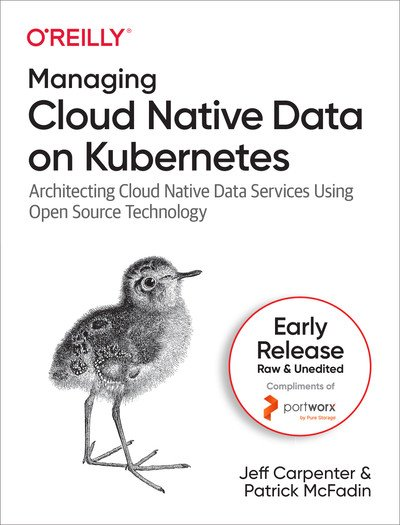Managing Cloud Native Data on Kubernetes

Buy a copy from Amazon
Managing Cloud Native Data on Kubernetes
Kubernetes has become the primary platform for deploying and managing cloud native applications.
But because it was originally designed for stateless workloads, working with data on Kubernetes has been challenging.
If you want to avoid the inefficiencies and duplicative costs of having separate infrastructure for applications and data, this practical guide can help.
Using Kubernetes as your platform, you’ll discover open source technologies that are designed and built for the cloud.
Delve into case studies to avoid the pitfalls others have faced and explore new use cases.
Get an insider’s view of what’s coming from the innovators who are creating next-generation architectures and infrastructure.
And you’ll learn how to:
- Manage different data use cases on Kubernetes
- Reduce costs and simplify application development
- Leverage data and infrastructure to create new use cases and business models
- Make data infrastructure choices that are cost-efficient, secure, scalable, and elastic And more
In this full release of the ebook, authors Jeff Carpenter and Patrick McFadin discuss how:
Cloud native data infrastructure can scale elastically and resist any downtime due to system failures and how to build these systems
Persistence is managed in container systems and how Kubernetes can be used to manage stateful workloads
Deploy both single node and multi-node distributed databases on Kubernetes with hands-on examples
Table of Contents
- Introduction to Cloud Native Data Infrastructure: Persistence, Streaming, and Batch Analytics
- Managing Data Storage on Kubernetes
- Databases on Kubernetes the Hard Way
- Automating Database Deployment on Kubernetes with Helm
- Automating Database Management on Kubernetes with Operators
- Integrating Data Infrastructure in a Kubernetes Stack
- Streaming Data on Kubernetes